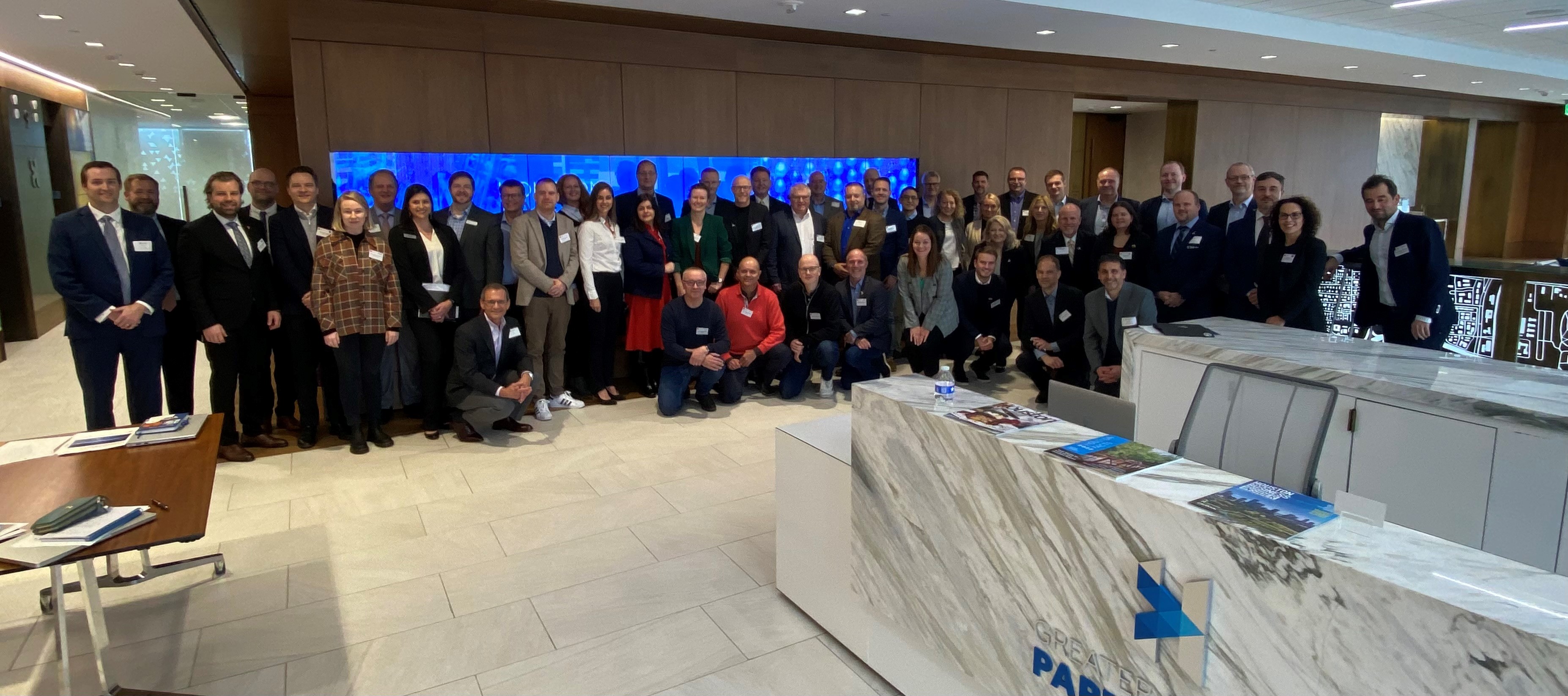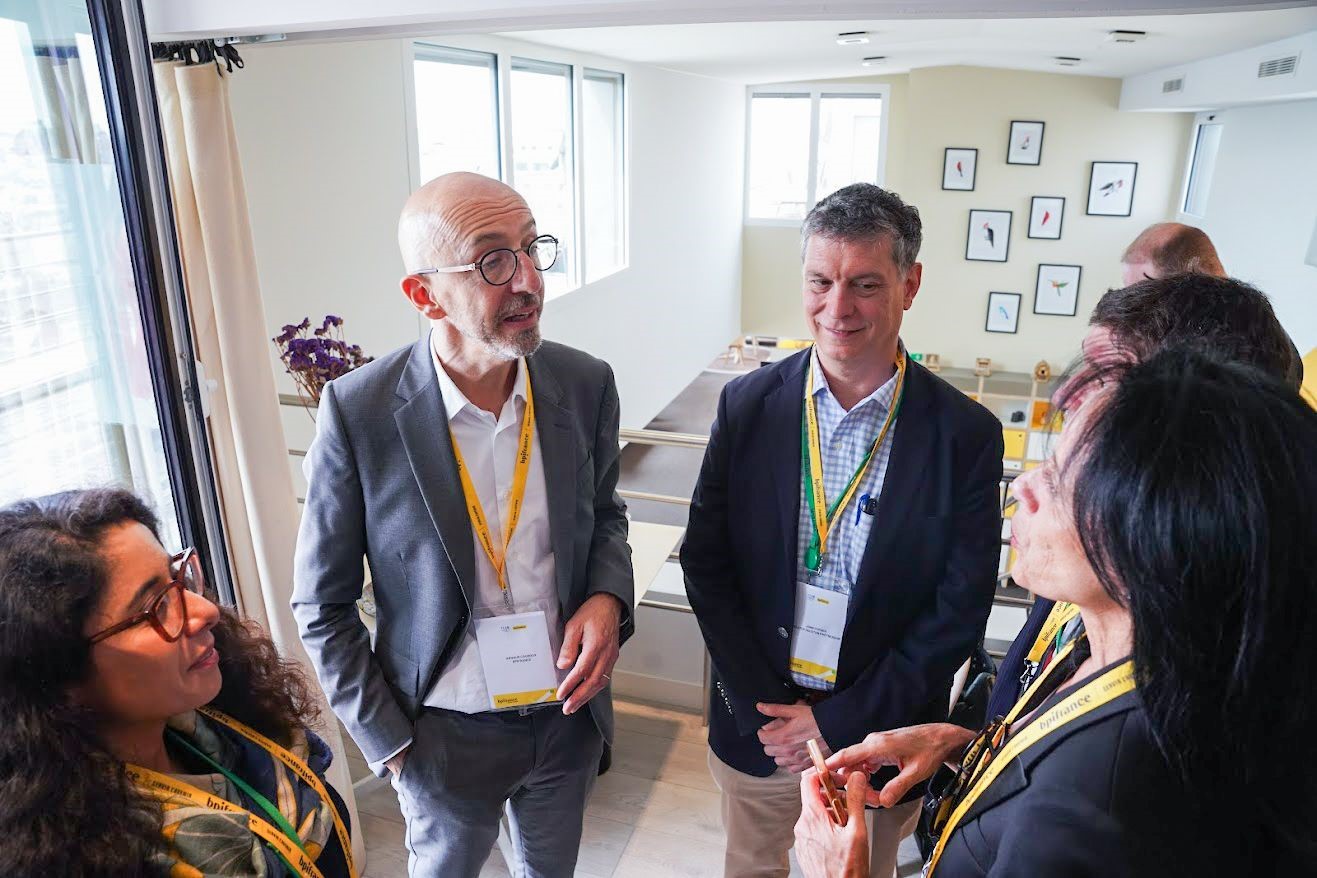Danish Delegation Visits Houston Seeking New Opportunities in Space Sector
Published Feb 09, 2023 by Shaw Adcock
A delegation of 35 Danish professionals recently visited Partnership Tower as part of efforts to strengthen Denmark’s space ecosystem by identifying growth and collaboration opportunities in the greater Houston region. The visit was the first of its kind, marking the largest contingent of Danish space professionals to ever visit Houston – a culmination of planning and collaboration that began in August 2022.
According to the Space Generation Advisory Council, Denmark has a strong presence and role in the space sector, including being a founding member of the European Space Agency, designing and delivering spacecraft components, and sending the first Danish astronaut to the International Space Station in 2015.
The Danish Consulate of Houston, the Bay Area Houston Economic Partnership (BAHEP) and the Greater Houston Partnership served as hosts to the delegation, who were engaged with relevant presentations, networking, visits and tours.
“With the support of Greater Houston Partnership and their partners at BAHEP we managed to put together a phenomenal program meeting almost all leading space companies and organizations in Texas,” said Morten Lynge, Consul General of Denmark in Houston. “The Danish companies left Houston extremely pleased with the visit and we hope to see several of them back in Houston in the months to come.”
Presentations from the event included an overview of Houston from Partnership Chief Economic Development Officer Susan Davenport and BAHEP Executive Director of Economic Development Dan Seal. An overview of Houston’s space ecosystem was delivered by a panel that included Partnership Sr. Director of Aerospace & Aviation Kevin Tipton, BAHEP Aerospace Marketing Manager Kim Morris, Houston Spaceport Director Arturo Machuca, and Sam Gunderson from NASA’s Johnson Space Center.
In addition to presentations from both Houston and Danish representatives, the afternoon portion of the event included a B2B Space Day where nearly 20 Danish organizations looking for expansion opportunities shared their mission, goals, and progress in a series of one-minute pitches. More than 60 representatives from Houston space companies attended the afternoon session.
“Between last October’s ‘Texas Comes to Denmark’ delegation focusing on energy transition, Denmark’s Bio Bridge agreement involving Texas Medical Center and this event, the connections between Houston and Denmark are building lots of momentum,” said Jeffrey Blair, Sr. Director of International Investment and Trade for Europe, Middle East and Africa. “Now we can add aerospace to the list of ongoing collaborations and economic opportunities.”
As part of their visit to Houston, the delegation visited Rice University’s Space Institute and the University of Houston-Clear Lake, where they met with Intuitive Machines, Nanoracks, Barrios Technologies and KBR. The delegation also made visits to Jacobs, the Johnson Space Center and the Houston Space Port before capping off the trip with a visit to Boca Chica and a tour of SpaceX.
Denmark ranks as Houston’s 38th largest international trade partner based on dollar value of traded goods. In 2021, trade between Houston and Denmark was valued at $1.4 billion, an increase of 31% from 2020, according to the Partnership's 2022 Global Houston Trade report.
The Danish space delegation visit will serve as a template to establish more productive conversations and connections with representatives from Denmark and other nations seeking to expand their space-focused operations in Houston.
Learn more about Houston’s aerospace and aviation industry.
 The Houston Report
The Houston Report



















